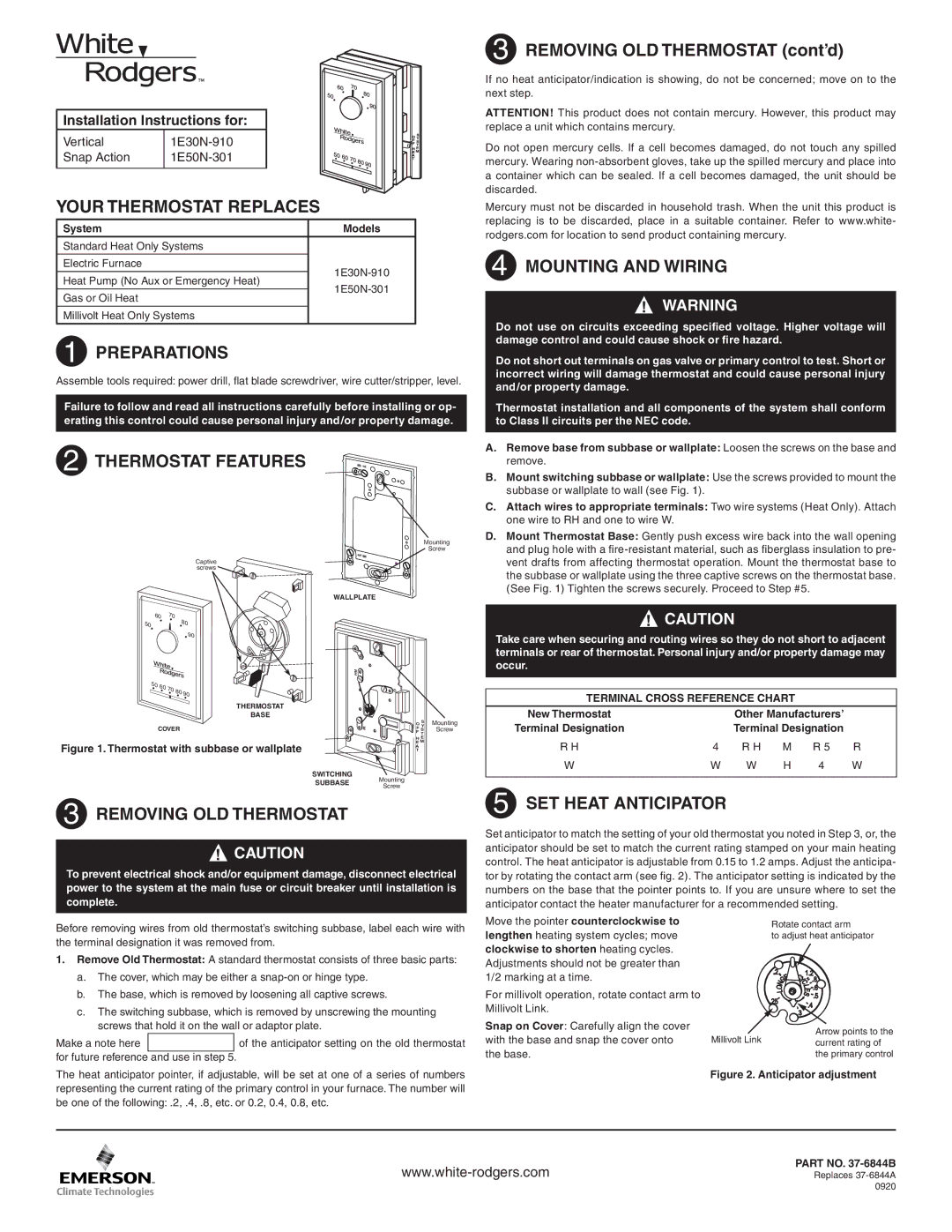1E50N-301, 1E30N-910 specifications
White Rodgers is a well-established name in the HVAC industry, known for its innovative and reliable control solutions. Among its notable offerings are the White Rodgers 1E30N-910 and 1E50N-301 thermostats, which boast a range of advanced features tailored to enhance comfort, convenience, and efficiency in heating and cooling systems.The White Rodgers 1E30N-910 is a programmable thermostat designed primarily for residential use. It supports four schedule settings per day, featuring options for both weekday and weekend programming. This allows users to customize temperature settings according to their routines, ensuring optimal comfort when they are home while saving energy during periods of absence. Its intuitive user interface, complete with a large, easy-to-read display, makes programming simple and user-friendly.
One of the standout technologies in the 1E30N-910 is its Smart Recovery feature. This technology intelligently calculates the optimal time to start heating or cooling the home to reach the desired temperature by the scheduled time. This means users can enjoy their desired temperature right when they arrive home while avoiding unnecessary energy consumption. Additionally, the thermostat is compatible with multi-stage heating and cooling systems, including heat pumps and gas furnaces.
On the other hand, the White Rodgers 1E50N-301 is a premium single-stage thermostat that combines technology with user-centered design. This model features a sleek, modern design that seamlessly integrates with various home decors. It provides users with a straightforward, non-programmable option that focuses primarily on ease of operation for those who prefer simplicity without sacrificing performance.
Both models are equipped with advanced temperature control capabilities that ensure accurate and consistent climate management. They feature an intuitive menu-driven setup that allows for straightforward adjustments to system settings and preferences. The 1E50N-301 also includes a low battery indicator, ensuring that users are never caught off guard by battery failure.
In addition to their user-friendly features, both the 1E30N-910 and 1E50N-301 are built with durability and reliability in mind, ensuring long-term performance. These thermostats reflect White Rodgers’ commitment to providing energy-efficient solutions that cater to the dynamic needs of modern households. Overall, whether opting for the programmable flexibility of the 1E30N-910 or the straightforward functionality of the 1E50N-301, users can expect to enhance their home comfort significantly while optimizing energy use.

